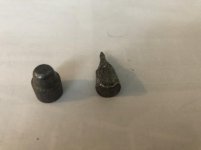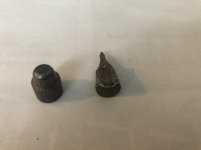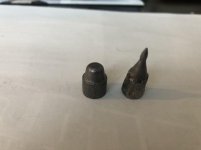DancesWithMoonclips
Member
- Joined
- Apr 27, 2017
- Messages
- 32
- Reaction score
- 25
I was testing a load yesterday in my 625-4 and had the strangest thing happen. About 10 rounds in, I had a discharge sound a little off, not quite as sharp as the others. I opened the cylinder and found the bullet still in the case, with severe gas cutting having melted the tip to a point. Load was 4.6 grains of bullseye behind a hornady 200 grain swc. Federal brass with small primer pocket, federal #100 primer. I'd used this same load for 50 rounds prior with no issues. Started a new can of bullseye, an older but sealed can that I'd taken in trade. Powder showed no signs of deterioration but had a slightly funny smell, not acrid or acidic. Hence the careful testing. I've never had any issue with this gun and I've Got eight years of successful reloading experience encompassing thousands of rounds. Has anyone ever seen anything like this? Any insight is much appreciated!



